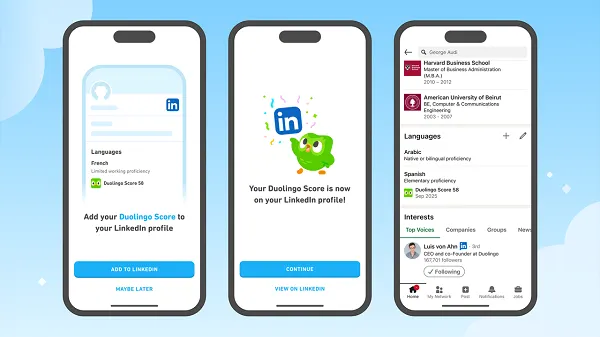4 things DTC founders wish they knew before entering retail stores
Founders from Care/of, Fishwife, Vacation and others pull back the curtain on what the Targets and Whole Foods of the world are looking for.

Direct-to-consumer brands that started during the pandemic are realizing that they need to be in physical stores if they’re looking to scale.
“The size, scale and speed at which people thought DTC was going to play in day-to-day customer grocery purchasing has not come to fruition as quickly as people thought it would,” said Zachary DeAngelo, founder and CEO of Rodeo CPG, a company that has helped DTC brands including Fishwife and Bored Cow strategize to enter physical retailers such as Whole Foods.
Plus, the sector’s recent venture capital boom and bust have made the urgency for DTC brands to find retail homes all the more pressing.
Vitamin company Care/of, for example, has been on Target shelves since 2021, and is now expanding its retail footprint, entering Sam’s Club today.
Below, find out what a few DTC founders wish they knew before entering retailers.
DTC marketing channels still matter
Some DTC marketers might assume that their advertising approach needs a major overhaul before entering a national retailer. But the founders who have been there, done that, stressed just how integral keeping the DTC marketing funnel strong is to retail success.
“Spending on direct-to-consumer also helps benefit from a retail standpoint,” said Craig Elbert, Care/of’s co-founder and CEO.
Read more: Care/of goes from DTC to Bayer-owned brand
Care/of increased marketing spend to promote its DTC channels by between 5% and 10% year over year, Elbert estimated. “The reality is retailers are approached by thousands of brands constantly wanting to be on their shelves. And so they’re in a position to be picky,” he explained, adding that upping DTC marketing dollars could give a brand a competitive edge.
Becca Millstein, co-founder and CEO of Fishwife, also said the tinned fish brand scaled up its paid marketing budget for channels and strategies used to promote its DTC business concurrent with its retail launch. Fishwife began rolling out in some Whole Foods stores in January.
Millstein estimated that she upped the DTC marketing budget by about 5% month over month.
“The bigger the brand is online, the more people are going to be aware of it and going to grocery stores to find it,” Millstein said.
Read more: Fishwife's rise and entry into Whole Foods
Have some money in the bank
“Something that I didn't realize is how expensive it is to go into retail,” said Nadya Okamoto, CEO and co-founder of period product brand August. The previously DTC-only brand began rolling out in Target stores over the past few weeks.
“August has raised millions of dollars to date, and a lot of that is to support our growth of needing inventory. Before Target will agree to stock you on a number of shelves they need to know that you’re not going to run out of product,” Okamoto said.
More news: Period care brands respond to Florida bill
Getting a return on these retail investments can take a long time, Rodeo’s DeAngelo said. While DTC brands are typically used to getting paid right away, that’s not the case with most retailers—it can take 90 days for a DTC brand to see cash from someone purchasing their products in a store, he explained.
Going into retail is not only expensive but also very capital-intensive, DeAngelo continued, adding that “both of those things can be shocking to a brand that's only sold DTC.”
There are a few ways for DTC brands to roughly calculate what entering a retailer would cost them. For instance, DeAngelo said that if a brand is selling $1 million of product, he’d estimate that a brand’s cost of goods (such as packaging and ingredients) would be about 50% of that, leaving it with $500,000. He then subtracts roughly 30% for trade and promotions, such as deals, setup fees, allowances for spoilage and more. After that, the brand would be left with $200,000 to pay for staff and other expenses.
“Many brands that we come across are actually losing money on every unit sold in retail through typical distribution, and that's usually a wild surprise for many of these founders,” DeAngelo said.
Retailers vary widely
DTC brands shouldn’t expect the same experience at every retailer they work with, according to some founders.
“Retail relationships vary drastically from one partner to another, and that’s at every point of the partnership,” Dakota Green, co-founder of Vacation, a sunscreen brand sold nationally in stores such as Ulta Beauty, Nordstrom, Aerie and Urban Outfitters, as well as some hotels, said in an email.
Green explained that selling to a customer shopping at a clothing store is different from selling to a hotel guest, and that “your in-store displays and marketing efforts” should reflect those differences.
Elbert said he was personally surprised to see how different working behind the scenes with one retailer can be from another.
“It might be [that] the buyer at one store more aggressively embraces risks and new brands, versus another buyer [who] might not,” Elbert said. “One company strategy may be very familiar with direct-to-consumer brands and how to bring those to market, and another retailer may not,” he continued. He also emphasized how important it is for a brand to trust the retail partner they’re working with, and make sure that there’s good communication on both sides.
Package makes perfect
“Packaging design is probably still the No. 1 thing to get right” to stand out on a shelf where 95% of people walking by haven’t heard of your product before, said Lach Hall, co-founder and executive chair, marketing, at Vacation. “How do you speak to the shopper that's walking past the sunscreen aisle … to one, capture their attention, and two, to convince them that you’re worth trialing?” he asked.
For example, Vacation packaged some of its sunscreen in a whipped cream-style can in order to catch more eyes in the sunscreen aisle, Hall said.
DeAngelo also noted that DTC brands can tell a much richer story online than they can on a shelf. In physical stores, these brands are often tasked with figuring out how to tell that story on a small package instead.
Sometimes that means changing the size or format of packaging, DeAngelo continued. For example, while a consumer might be willing to buy a bottle of $22 hot sauce online, they might think twice when they head to a store and see cheaper bottles lined up nearby on the shelf. Reducing the ounce size of the hot sauce could be a good solution here, he said.
Read more: Behind Truff's sizzling rise
“Your packaging often has to be different. It has to be punchier, has to tell the story more quickly, more efficiently,” DeAngelo explained.

 AbJimroe
AbJimroe 






























.jpg&h=630&w=1200&q=100&v=f776164e2b&c=1)

